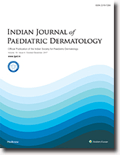
Indian Journal of Paediatric Dermatology
Scope & Guideline
Exploring breakthroughs in paediatric dermatology.
Introduction
Aims and Scopes
- Pediatric Dermatology Research:
The journal presents research specifically dedicated to skin diseases in children, highlighting unique conditions and their management. - Clinical Observations and Case Studies:
It features detailed case studies that provide insights into rare dermatological conditions, treatment outcomes, and diagnostic challenges in pediatric patients. - Epidemiological Studies:
The journal includes studies that analyze the prevalence and patterns of skin disorders among pediatric populations, contributing to public health knowledge. - Innovative Treatment Approaches:
There is a consistent focus on emerging therapies and treatment modalities for pediatric skin conditions, including the use of biologics and novel pharmacological agents. - Interdisciplinary Collaboration:
The journal encourages collaboration between dermatology and other medical fields, such as pediatrics and immunology, to provide comprehensive care for affected children.
Trending and Emerging
- Impact of COVID-19 on Pediatric Dermatology:
Recent studies have increasingly addressed the dermatological manifestations related to COVID-19, indicating a growing concern about its effects on children's skin health. - Psychodermatology and Mental Health:
There is an emerging interest in the connection between skin conditions and psychological factors in children, highlighting the importance of mental health in dermatological care. - Genodermatoses and Rare Syndromes:
A rising trend is observed in the documentation and study of rare genetic skin disorders, reflecting a growing interest in understanding these complex conditions. - Teledermatology and Digital Health:
The journal is increasingly covering topics related to teledermatology, showcasing the adaptation of dermatological practices in response to modern healthcare demands. - Interventional Studies on Chronic Skin Conditions:
Research focusing on the efficacy of innovative treatments for chronic pediatric skin diseases, such as atopic dermatitis and psoriasis, is gaining momentum.
Declining or Waning
- Generalized Skin Disorders:
There appears to be a reduced emphasis on broadly classified skin disorders, with more specific studies gaining traction, indicating a shift towards targeted research. - Traditional Dermatological Treatments:
Papers focusing on older treatment methodologies, such as topical steroids, are becoming less frequent, as newer therapies gain favor in clinical discussions. - Non-specific Dermatological Conditions:
The journal has seen a reduction in publications addressing non-specific or vague dermatological conditions, as researchers now prefer to investigate more defined syndromes. - Dermatological Education and Awareness:
There is a noticeable decline in articles aimed at educating practitioners about common pediatric dermatological issues, as the focus shifts towards clinical research and advanced treatments.
Similar Journals
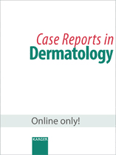
Case Reports in Dermatology
Unlocking the potential of case reports for better patient care.Case Reports in Dermatology is a leading Open Access academic journal dedicated to the publication of case reports and unique clinical findings in the field of dermatology. Published by KARGER and based in Switzerland, the journal has been an open access resource since 2009, enhancing the visibility and accessibility of vital research for dermatology professionals and the scientific community. With an impressive ISSN of 1662-6567 and ranking in the Q3 category among dermatological journals, it serves as a crucial platform for researchers seeking to share innovative case studies, validate diagnostic approaches, and explore treatment outcomes. The journal continues to contribute to advancing dermatological science with a convergence timeline extending from 2010 to 2024. By promoting the dissemination of emerging knowledge and practices, Case Reports in Dermatology plays a significant role in fostering collaboration among practitioners, enhancing educational efforts, and ultimately improving patient care in dermatology.
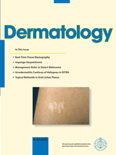
DERMATOLOGY
Fostering collaboration in the pursuit of skin health.DERMATOLOGY, an esteemed journal published by KARGER, is a vital resource in the field of dermatological research and clinical practice. Established in 1893, with its comprehensive coverage extending to 2024, this journal has earned its place as a leading publication, holding a prestigious Q1 quartile ranking in Dermatology and ranking 15th out of 142 in the Scopus Medicine - Dermatology category, reflecting its 89th percentile standing within the discipline. The journal aims to disseminate innovative research findings, critical reviews, and clinical studies that advance the understanding of skin disorders and their treatments. While primarily available through institutional subscriptions, DERMATOLOGY remains committed to enhancing accessibility and fostering international collaboration among researchers, professionals, and students in the dermatological community. Its rigorous peer-review process guarantees the highest quality of published works, making it an essential reference for those dedicated to advancing dermatological science and improving patient care.

Acta Dermatovenerologica Croatica
Advancing Knowledge in Dermatology and VenereologyActa Dermatovenerologica Croatica is a premier journal dedicated to the fields of dermatology and venereology, published by the Croatian Dermatovenereological Society. Established in 1994, this journal has been a vital platform for disseminating research and advancements in the understanding and treatment of skin diseases and sexually transmitted infections. Although it is currently classified in the Q4 quartile for dermatology, infectious diseases, and miscellaneous medicine, it provides a unique opportunity for emerging researchers and seasoned professionals to contribute to a growing body of knowledge. Based in Zagreb, Croatia, the journal emphasizes free access to information that enhances clinical practices and scientific understanding among dermatologists and venereologists worldwide. As the journal approaches its 30th anniversary, it continues to aim for excellence in research quality, fostering collaboration, and innovating in the ever-evolving fields it represents.
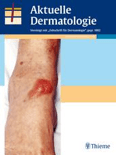
AKTUELLE DERMATOLOGIE
Championing the Evolution of Dermatological InsightsAKTUELLE DERMATOLOGIE is a distinguished journal in the field of Dermatology, published by GEORG THIEME VERLAG KG in Germany. With a commitment to advancing knowledge and practice in dermatological science, the journal has regularly featured research articles, reviews, and case studies since its inception in 1975 and continues to publish contributions through 2024. Despite being categorized in the lower quartile (Q4) of dermatology journals and holding a Scopus rank of #127 out of 142, it plays a pivotal role in disseminating valuable insights that support ongoing education and research in the discipline. The journal provides an essential platform for both seasoned professionals and budding researchers to share their findings, explore emerging trends, and discuss clinical practices, all while serving the needs of an evolving medical landscape. Access to its content may be restricted, but the journal remains a crucial reference for those invested in the future of dermatological research and patient care.
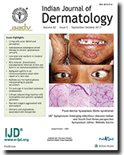
INDIAN JOURNAL OF DERMATOLOGY
Transforming dermatology research into accessible knowledge.INDIAN JOURNAL OF DERMATOLOGY, published by Wolters Kluwer Medknow Publications, is a renowned open-access journal that has been a significant platform for disseminating vital research in the field of dermatology since its inception in 1962. With an ISSN of 0019-5154 and an E-ISSN of 1998-3611, the journal covers a comprehensive array of topics relevant to skin health and diseases, serving both academic and clinical audiences in India and beyond. Having transitioned to an open access model in 2005, it strives to enhance the reach and impact of dermatological research. The journal is classified in the Q3 quartile within the dermatology category as of 2023 and ranks 82 out of 142 in Scopus, showcasing its contribution to the field despite competitive rankings. By fostering scholarly communication and providing a rigorous peer-review process, the INDIAN JOURNAL OF DERMATOLOGY remains a vital resource for researchers, practitioners, and students devoted to advancing the understanding and treatment of skin disorders.

JOURNAL OF THE AMERICAN ACADEMY OF DERMATOLOGY
Leading the way in skin science and clinical excellence.JOURNAL OF THE AMERICAN ACADEMY OF DERMATOLOGY, published by Mosby-Elsevier, stands at the forefront of dermatological research and education. With an impressive impact factor and categorized as Q1 in Dermatology, this journal has established itself as a pivotal resource for healthcare professionals and researchers in the field. Since its inception in 1979, it has provided a platform for high-quality peer-reviewed articles, contributing significantly to advancements in dermatological science and practice through 2024. The journal commands an honorable position, ranking #8 out of 142 in the Scopus database's medicine dermatology category, placing it in the 94th percentile among its peers. Readers can access a wealth of cutting-edge studies, case reports, and reviews that address a broad spectrum of topics, from clinical dermatology to emerging therapies. In addition, the journal's commitment to excellence ensures it remains an essential tool for students, clinicians, and researchers dedicated to improving skin health and furthering knowledge in dermatology.
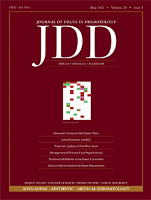
Journal of Drugs in Dermatology
Unveiling the latest breakthroughs in skin treatment.Journal of Drugs in Dermatology, an esteemed publication in the field of dermatology, serves as a vital resource for researchers, clinicians, and healthcare professionals dedicated to advancing knowledge and practices in skin-related therapies and treatments. Established in 2002 and published in the United States, this journal focuses on a wide range of topics pertinent to dermatological pharmacology and therapeutics, reflecting contemporary scientific advancements and innovative approaches to patient care. With a strong presence in Scopus rankings, situating it at rank #73 within the dermatology category, and achieving a commendable Q2 quartile classification in both dermatology and general medicine categories, the journal is committed to enhancing understanding of drug efficacy and safety in dermatological conditions. While the journal maintains a traditional access model, its impact factor underscores its significance in the research community, supporting the ongoing dialogue between academia and clinical practice. We invite professionals and students alike to explore the latest findings and contribute to the progressive discourse on dermatological treatments through this important publication.
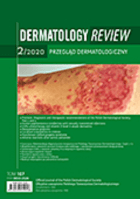
Przeglad Dermatologiczny
Enhancing Understanding of Skin Conditions WorldwidePrzeglad Dermatologiczny is a peer-reviewed open-access journal published by TERMEDIA PUBLISHING HOUSE LTD, based in Poland. Since its establishment in 1951, this journal has been dedicated to advancing the field of dermatology by providing a platform for the dissemination of original research, reviews, and clinical case studies. With an e-ISSN of 2084-9893, it has gained recognition within the academic community, despite its current classification in the Q4 quartile of dermatological journals. The journal has been openly accessible since 2009, promoting wider dissemination of scientific knowledge, and is crucial for researchers, professionals, and students alike. While it holds a current rank of #105 out of 142 in the Scopus Dermatology category, the journal continually strives to enhance its impact through quality publications that address pressing dermatological issues. The diverse range of topics covered in the journal ensures it remains a vital resource for those looking to stay informed on the latest developments in dermatological research.

JOURNAL OF DERMATOLOGY
Pioneering insights for a healthier tomorrow.The Journal of Dermatology, published by Wiley, is a premier academic journal dedicated to advancing the field of dermatology, with its esteemed reputation reflected in its Q1 ranking in Dermatology and a remarkable Q2 ranking in Miscellaneous Medicine as of 2023. Since its inception in 1974, the journal has become a vital resource for researchers, clinicians, and students alike, covering pioneering studies and cutting-edge advancements in skin health and disease. With a Scopus rank of #32 out of 142 in the Dermatology category, placing it in the 77th percentile, the journal underscores its commitment to fostering knowledge and innovation within the dermatological community. Although the journal operates under a subscription model, it remains an essential platform for disseminating impactful research that shapes clinical practice and enhances patient care. For anyone invested in dermatological sciences, Journal of Dermatology serves as a key publication where critical insights and developments are regularly showcased.

Dermatologie
Advancing the Science of Skin HealthDermatologie, published by SPRINGER HEIDELBERG, is a prominent journal dedicated to the advancing field of dermatology. With its ISSN 2731-7005 and E-ISSN 2731-7013, this journal has established itself as a valuable resource for researchers, professionals, and students alike. Originating in Germany, the journal focuses on disseminating innovative research from 2022 to 2024, contributing significantly to the understanding of skin health and disease management. Despite its current ranking within the Q3 category in dermatology and a Scopus rank of #88/142, it provides critical insights and advances in clinical practice, epidemiology, and therapeutic modalities. With an emphasis on open discourse, it seeks to foster collaboration among healthcare professionals and researchers, thereby enhancing the quality and accessibility of dermatological research. Engage with Dermatologie to stay at the forefront of the latest advancements in skin-related health issues.